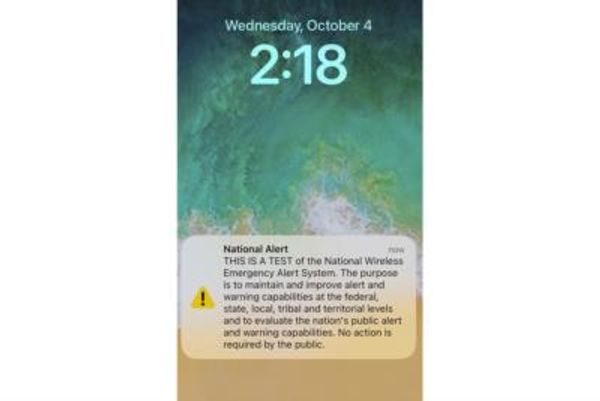Scientists with the Canadian Hydrogen Intensity Mapping Experiment (CHIME) Collaboration, who include researchers at the Pune-based Tata Institute for Fundamental Research (TIFR) and the National Centre for Radio Astrophysics (NCRA), have assembled the largest collection of fast radio bursts (FRBs) in the telescope’s first FRB catalogue.
While catching sight of an FRB is considered a rare thing in the field of radio astronomy, prior to the CHIME project, radio astronomers had only caught sight of around 140 bursts in their scopes since the first FRB was spotted in 2007.
FRBs are oddly bright flashes of light, registering in the radio band of the electromagnetic spectrum, which blaze for a few milliseconds before vanishing without a trace. These brief and mysterious beacons have been spotted in various and distant parts of the universe, as well as in our own galaxy. Their origins are unknown and their appearance is highly unpredictable.
But the advent of the CHIME project — a large stationary radio telescope in British Columbia, Canada — has been a game-changer and has nearly quadrupled the number of fast radio bursts discovered to date. With more observations, astronomers hope soon to pin down the extreme origins of these curiously bright signals.
The telescope has detected a whopping 535 new fast radio bursts in its first year of operation itself, between 2018 and 2019.
“Before CHIME came along, different telescopes had observed a handful of FRBs each, but with their own selection criteria and software. But now, with the help of CHIME, we can observe a large swathe of the sky round the clock and were able to detect FRBs at an unprecedented rate. We could gather the first large sample of FRBs with a single instrument and a single, well-understood selection criteria which is allowing us to get a far better understanding of the properties of the FRBs as a population,” said CHIME/FRB member Shriharsh Tendulkar, also a faculty member at the TIFR-NCRA.
The new catalogue significantly expands the current library of known FRBs, and is already yielding clues as to their properties. For instance, the newly discovered bursts appear to fall in two distinct classes: those that repeat, and those that don’t. Scientists have identified 18 FRB sources that burst repeatedly, while the rest appear to be one-offs.
When the scientists mapped their locations, they found the bursts were evenly distributed in space, seeming to arise from any and all parts of the sky. From the FRBs that CHIME was able to detect, the scientists calculated that bright fast radio bursts occur at a rate of about 800 per day across the entire sky — the most precise estimate of FRBs overall rate to date.
The first FRB catalogue is to be presented later this week at the American Astronomical Society Meeting.
Mr. Tendulkar said that observations showed that the repeaters looked different, with each burst lasting slightly longer and emitting more focused radio frequencies than bursts from single, non-repeating FRBs.
“We find that repeaters emit bursts of longer duration with the radiation being detected in a narrower range of frequencies compared to the one-off FRBs. These differences strongly suggest that emission from repeaters and non-repeaters is generated either by different physical mechanisms or in different astrophysical environments,” said Pragya Chawla, a Ph.D. candidate at McGill University and a member of the CHIME team.
CHIME comprises four massive cylindrical radio antennas, roughly the size and shape of snowboarding half-pipes, located at the Dominion Radio Astrophysical Observatory, operated by the National Research Council of Canada in British Columbia. The telescope receives radio signals each day from half of the sky as the Earth rotates.
While most radio astronomy is done by swivelling a large dish to focus light from different parts of the sky, CHIME stares, motionless, at the sky, and focuses incoming signals using a correlator — a powerful digital signal processor that can work through huge amounts of data, at a rate of about seven terrabytes per second, equivalent to a few per cent of the world’s Internet traffic.
“Digital signal processing is what makes CHIME able to reconstruct and ‘look’ in thousands of directions simultaneously. That is what helps us detect FRBs a thousand times more often than a traditional telescope,” says Kiyoshi Masui, Assistant Professor of Physics at the Massachusetts Institute of Technology (MIT), who will lead the group’s conference presentation at the American Astronomical Society Meeting.
For each of the 535 FRBs that CHIME detected, Professor Masui and his colleagues measured its dispersion and found that most bursts likely originated from far-off sources within distant galaxies.
The fact that the bursts were bright enough to be detected by CHIME suggests that they must have been produced by extremely energetic sources, he said. As the telescope detects more FRBs, scientists hope to pin down exactly what kind of exotic phenomena could generate such ultra bright, ultra fast signals.
According to Professor Masui, the scientists plan to use the bursts, and their dispersion estimates, to map the distribution of gas throughout the universe.







